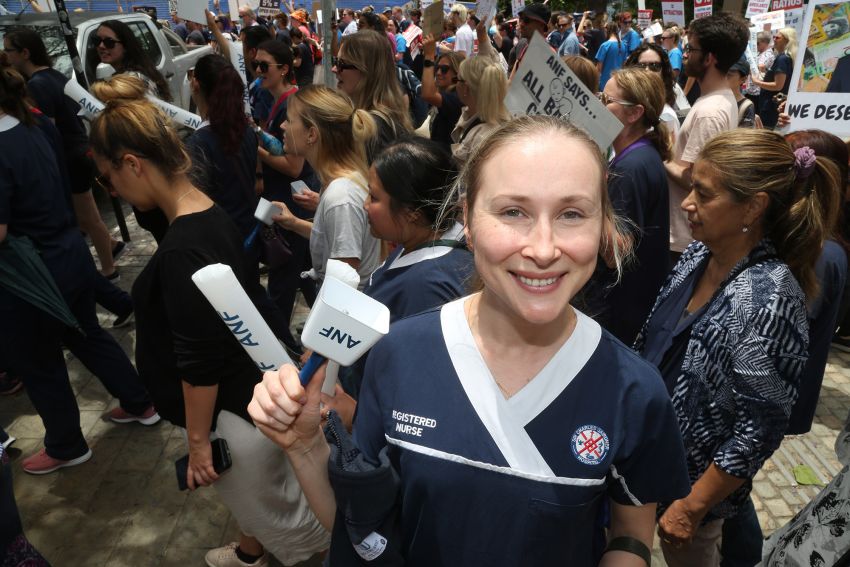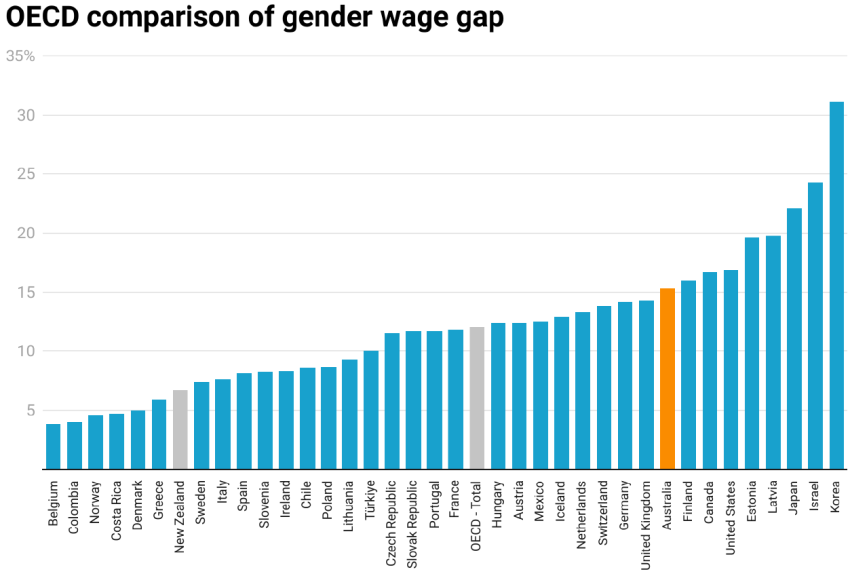
Women earn $3 billion less than men every week, despite making up 48% of the workforce. These are some of the shocking findings from a report released by The Australia Institute (TAI), showing how entrenched gender inequality still is.
The Times They Aren’t A-Changin (enough) is a bleak reminder of where Australia stands globally on gender equality.
The findings were based on data from sources including the Australian Bureau of Statistics (ABS). It shows that at the current rate of change, Australia won’t close the pay gap for another 30 years — only reaching zero by 2053.
According to the ABS, last year the gender pay gap was 13.3% across full-time weekly earnings — women made 87¢ for every dollar a male worker made.
The report makes it clear that drawing data only from full-time weekly wages obscures the truth behind pay disparity, because it excludes overtime earnings, bonuses and part-time or casual workers, who make up more than 30% of the work force.
Considering these factors, the pay gap jumps to 29%, meaning women earn $476.30 less than men each week.
The report gives several explanations for why there is still so much disparity despite laws, including the Sexual Discrimination Act 1984, that make gender inequality in the workforce unlawful.
Gendered segregation across industry, occupations and job quality plays a large role, with women being overrepresented in low-paying, insecure work, and underrepresented in high-paying jobs.
“Men have higher average salaries than women in 95% of all occupations, including those where women dominate the workforce," the TAI report said. "For example, women account for 99% of all midwives, and yet are paid on average 19% less."
Women are also disproportionately overrepresented in part-time work (43% of women compared to 18% of men in 2022), often due to domestic and family obligations. They are less likely to receive overtime pay, bonus income or any benefits that come with stable full-time employment.
This means women not only receive lower wages, they also on average work fewer hours than men, amplifying the pay gap.
Across all ages, men are more likely to work in managerial or senior positions than women, even in women-dominated industries such as health care or social assistance.
Only in two industries — transportation and construction — do women make up a greater share of managers than they do overall in the workforce.
This gap in management jobs has barely changed over several decades.
The report found that “Since the mid-1980s, the percent of males employed in the prime-managerial ages of 35 to 64 has remained steady, between 19% to 20% … There has not been a significant increase in the share of women working as managers. The current level of 13.1% is just 1 percentage point higher than it was in 1985.”
Since women have traditionally been denied higher-paying roles, they are more likely to take leave, or work part-time, to raise children or care for family members. In addition to this financial double punishment, they often face discrimination when they return to work.
“Despite explicit employment discrimination against women now being illegal, the Australia Human Rights Commission (2014) still found that 49% of mothers reported experiencing discrimination in the workplace at some point during pregnancy, parental leave or on return to work.”
Another barrier women face to higher pay is the inequality of unpaid working hours among genders.
According to TAI, “Australian women spent 81% more time doing unpaid domestic and care work than men, more than in similar English-speaking nations of Canada, the USA and UK.”
Taking on 81% more unpaid duties, while doing 43.4% less paid work every day than men, severely reduces women’s earning potential.
The report stressed that the pay gap’s impact is not limited to annual income and that the cumulative effects of the gap over a woman’s working life directly affect their ability to retire comfortably.
The report cited ABS figures and says: “A woman beginning work at the age of 20 and earning the median wage at all stages of her life, will in total earn $1.01 million less in today’s dollars than would a man who earns the median incomes throughout his working life.”
This loss of income throughout a woman’s life also creates a gap in their superannuation earnings.
“A woman who earns the median incomes throughout her life will retire with $136,041 less in today’s dollars in superannuation than a man who had spent their entire working life on the male median earnings at each age group,” the report said.
The report made several recommendations for how to move towards more economic equality for women.
They include policies to promote “greater access to childcare and parental leave” for both parents; family-friendly work practices; and a wage rise in industries dominated by women — “most urgently in the care sector”.
The report suggested the federal government enact reforms, including the right to stable work and family-friendly working times for all employees in the National Employment Standards.
Australia clearly has a long way to go before closing the 13.3% wages gap, but where does it stand globally?
The Organisation for Economic Co-operation and Development (OECD) reported that, of the 38 countries it observed, the average gender pay gap is 12%, with Belgium the lowest at 3.8%, and Korea the highest at 38%. Australia’s wage gap is higher than average by 3.3 percentage points, ranking 9th-worst out of 38 OECD countries.
